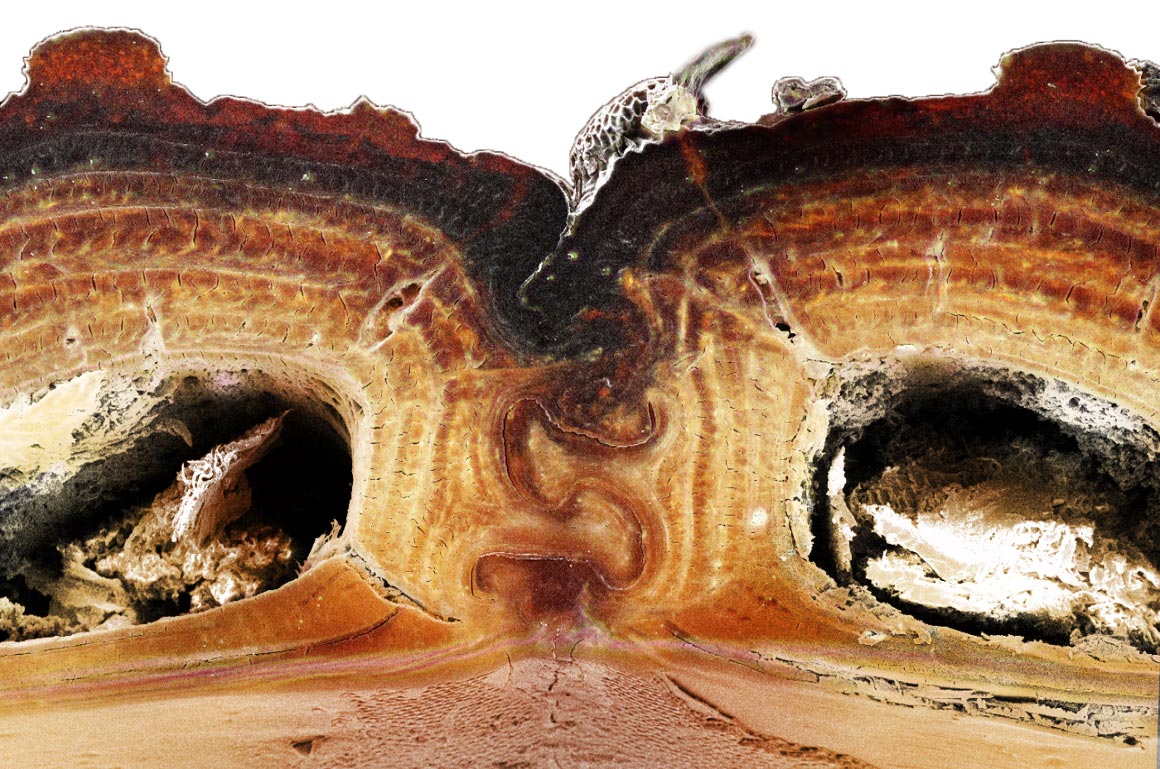
Native to desert habitats in Southern California, the diabolical ironclad beetle has an exoskeleton that’s one of the toughest, most crush-resistant structures known to exist in the animal kingdom.
Southern California’s diabolical ironclad beetle has an exoskeleton so tough, it can even survive being run over by a car.
With one of the more awe-inspiring names in the animal kingdom, the diabolical ironclad beetle is one formidable insect.
The beetle’s survival depends on two key factors: its ability to convincingly play dead and an exoskeleton that’s one of the toughest, most crush-resistant structures known to exist in the biological world.
“The ironclad is a terrestrial beetle, so it’s not lightweight and fast but built more like a little tank,” said principle investigator and corresponding author David Kisailus, UCI professor of materials science & engineering.
The diabolical ironclad beetle is so tough, it can survive getting run over by a car applying ~100 newtons of force.
They found that the diabolical ironclad beetle can withstand a force of about 39,000 times its body weight.
Conducting a series of high-resolution microscopic and spectroscopic evaluations, Rivera and Kisailus learned that the bug’s secret lies in the material makeup and architecture of its exoskeleton, specifically, its elytra.
A cross section of the medial suture, where two halves of the diabolical ironclad beetle’s elytra meet, shows the puzzle piece configuration that’s among the keys to the insect’s incredible durability.
In collaboration with a group led by Atsushi Arakaki and his graduate student Satoshi Murata, both from the Tokyo University of Agriculture and Technology, they examined the chemical composition of the exoskeleton of a lighter flying beetle and compared it to that of their earthbound subject.
The diabolical ironclad beetle’s outer layer has a significantly higher concentration of protein — about 10 percent more by weight — which the researchers suggest contributes to the enhanced toughness of the elytra.
To further substantiate their experimental observations, Rivera and co-authors Maryam Hosseini and David Restrepo — both from Pablo Zavattieri’s lab at Purdue University — employed 3D printing techniques to create their own structures of the same design.
Kisailus said he sees great promise in the ironclad beetle’s exoskeleton and other biological systems for new substances to benefit humanity.
His team, including UC Riverside undergraduate Drago Vasile, mimicked the elliptical, interlocking pieces of the diabolical ironclad beetle’s exoskeleton with carbon fiber-reinforced plastics.
Reference: “Toughening mechanisms of the elytra of the diabolical ironclad beetle” by Jesus Rivera, Maryam Sadat Hosseini, David Restrepo, Satoshi Murata, Drago Vasile, Dilworth Y.
Barnard, Atsushi Arakaki, Pablo Zavattieri and David Kisailus, 21 October 2020, Nature.
October 22, 2020
October 22, 2020
October 22, 2020
October 22, 2020
October 22, 2020
October 22, 2020
October 21, 2020